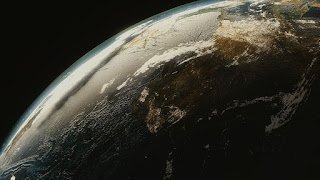Reproducing Worldwide Atmosphere Through Earth's History
A key segment when guaging what the Earth's atmosphere may resemble later on is the capacity to draw on precise temperature records of the past.
By recreating past latitudinal temperature inclinations (the distinction in normal temperature between the equator and the shafts) scientists can anticipate where, for instance, the fly stream, which controls tempests and temperatures in the mid-scopes (calm zones between the tropics and the polar circles), will be situated.
The difficulty is, a large number of the current information are one-sided toward specific districts or kinds of conditions, not illustrating Earth's old temperatures.
Analysts from the Department of Earth and Environmental Sciences, including Emily Judd '20 Ph.D., Thonis Family Assistant Professor Tripti Bhattacharya and Professor Linda Ivany, have distributed an investigation named, "A dynamical structure for deciphering antiquated ocean surface temperatures," in the diary "Geophysical Research Letters," to help represent the counterbalance between area one-sided paleoclimate information and the 'valid' normal temperature at a given scope through Earth's history. Their work was financed by the National Science Foundation.
As indicated by Judd, precise temperature assessments of antiquated seas are essential since they are the best instrument for recreating worldwide atmosphere conditions before, including measurements like mean worldwide temperature and the latitudinal temperature inclination. While atmosphere models give situations of what the world could resemble later on, paleoclimate contemplates (investigation of past atmospheres) give understanding into what the world resembled before. Perceiving how well the models we use to anticipate the future can reproduce the previous discloses to us how sure we can be in their outcomes. It is in this manner of most extreme significance to have careful, very much examined information from the old past.

"By seeing how latitudinal temperature angles have changed through the span of Earth's history and under a wide range of atmosphere systems, we can begin to all the more likely envision what will occur later on," says Judd.
To decide old temperatures, geologists study intermediaries, which are substance or organic follows that record temperatures from sedimentary stores saved on the ocean bottom or mainlands. Because of the reusing of antiquated ocean bottom into the Earth's mantle, there is a 'lapse date' on the accessibility of ocean bottom information. Most old temperature intermediaries in this way originate from residue that amassed on mainland edges or in shallow inland oceans where records can continue for any longer.
Judd, Bhattacharya and Ivany use temperature information from present day seas to uncover steady, unsurprising examples where the sea surface is hotter or cooler, or pretty much occasional, than in any case expected at that scope.
"The greatest balances happen to be in the two settings that are generally spoken to in the geologic past," says Ivany. "Knowing how those districts are one-sided in contrast with the worldwide mean permits scientists to more readily decipher the intermediary information originating from the old Earth."
Information from shallow, semi-confined oceans (e.g., the Mediterranean and Baltic Seas) show that ocean surface temperatures are hotter than in the untamed sea. Accordingly, a key finding of their paper hypothesizes that appraisals of worldwide mean temperature from the Paleozoic Era (~540-250 million years back), when most of information originate from shallow oceans, are ridiculously hot.
Indeed, even in the later geologic past, the mind greater part of ocean surface temperature gauges originate from beach front settings, which they exhibit are additionally deliberately one-sided in contrast with vast sea temperatures.
So as to have a more exact record of normal sea temperature at a given scope, Bhattacharya says scientists must record for the deficient idea of paleotemperature information. "Our work features the requirement for mainstream researchers to concentrate examining endeavors on under-inspected situations," says Bhattacharya. "New examining endeavors are basic to ensure we are similarly inspecting one of a kind ecological settings for various timespans history."
As indicated by Judd, the paleoclimate network has made significant advances toward understanding antiquated atmospheres in the previous barely any decades. New, quicker, and less expensive expository methods, just as a flood in endeavors that recoup sea dregs centers, have prompted monstrous arrangements of antiquated ocean surface temperature gauges. In spite of these progressions, there are as yet critical differences between temperature gauges from various areas inside a similar time stretch as well as between temperature appraisals and atmosphere model outcomes.
"Our investigation gives a structure inside which to accommodate these disparities," says Judd. "We feature where, when and why temperature gauges from similar scopes may contrast from each other and contrast distinctive atmosphere models' capacities with reproduce these examples. Our work along these lines lays the preparation to all the more comprehensively and heartily recreate worldwide atmosphere through Earth's history."
Story Source:
Materials gave by Syracuse University. Unique composed by Dan Bernardi.
Note: Content might be altered for style and length.
Know Hawaiian Earthquakes
Visit Official Home Page





0 Comments